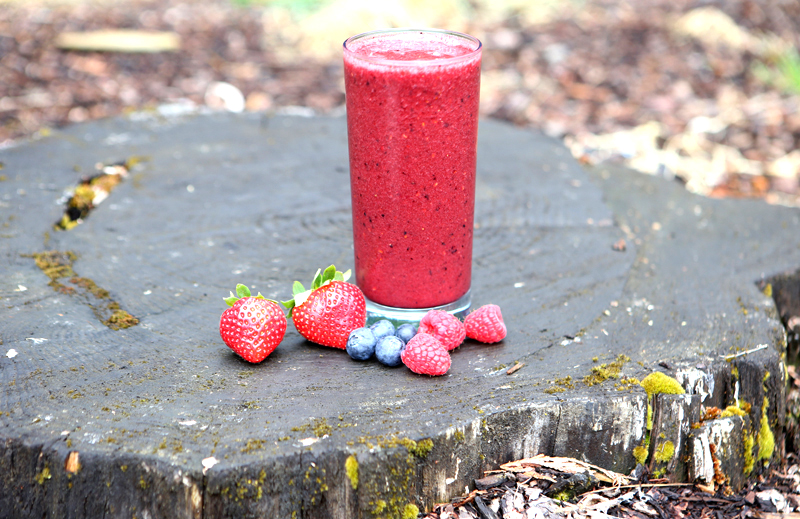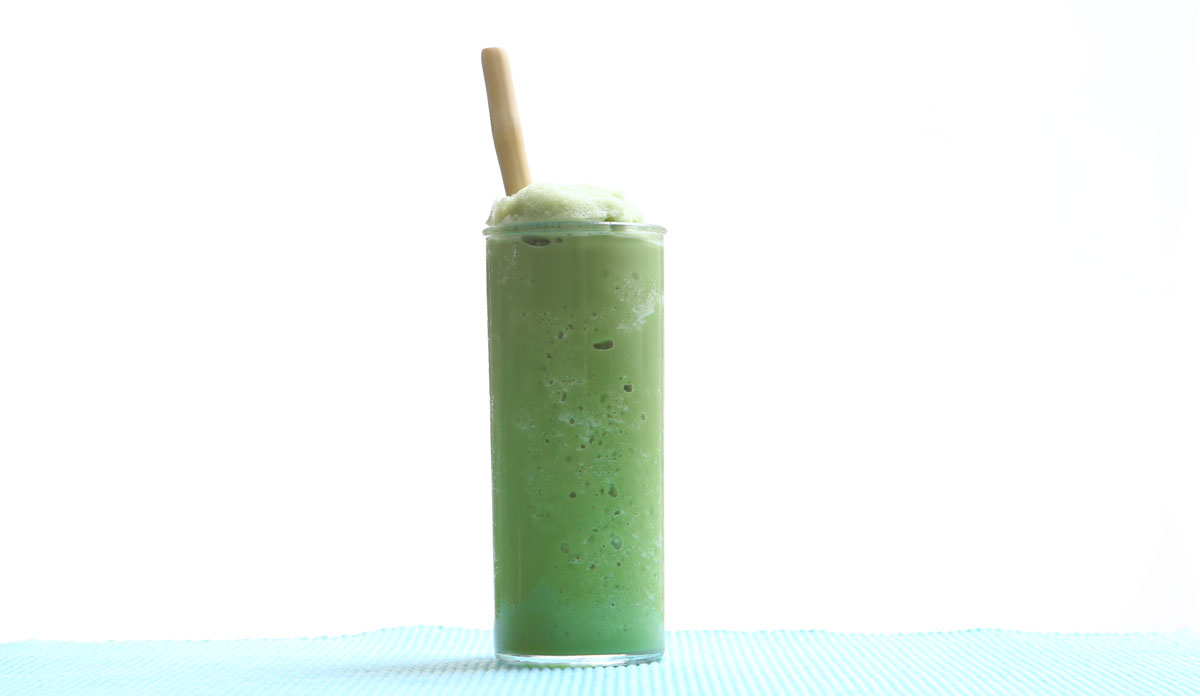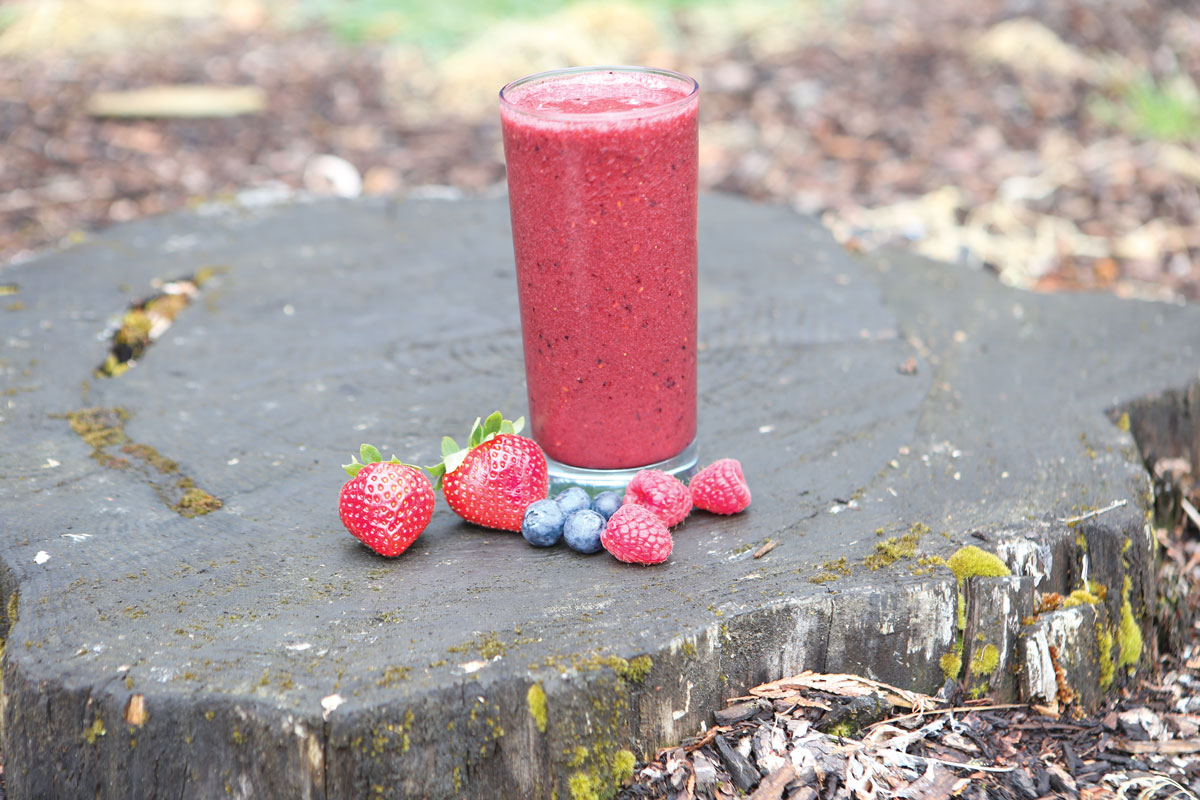[I]n February we featured Down Dog Healing Café, an ayurvedic shop, in our Café Crossroads section. The Philadelphia café serves organic coffee and nourishing teas, alongside chilled juices and tonics, and herbal elixirs. Owner Kei Kurimoto told Fresh Cup that despite the specialized nature of her shop, every day she saw more eyes opened by Down Dog’s mission to offer good-for-you refreshment. Over time Down Dog’s regular coffee-drinking customers would slowly taste test the shop’s healthful teas; then one day drop in just to throw back a vitamin C-boosted wellness shot. The customer’s shift was organic, like the vegetables and fruits the staff juiced regularly for the neighborhood’s yoga instructors, vegans, and thirsty joggers.
The same market Down Dog has tapped into grows daily, in cities across the globe. As consumers become more interested in where their foods come from (including their coffee and tea), and more in tune with what foods are better for them, coffee and tea retailers are looking for ways to integrate healthful menu items that go beyond liquid refreshment and a caffeine kick. At the same time, we love our coffee and tea the way it is. A shot of almond milk might boost the nutritional value of a cup of Costa Rican coffee, but it will drown out the roast’s subtle flavors, too. Luckily, there is a high-price-point, barista-friendly, coffee- and tea-worthy category for strengthening your shop’s healthful edge: blended drinks brim with potential for nourishing café fare.
Revitalizing the Frappé
In appealing to customers who might be on the way to a pilates class, say, or fresh off a run, or even in the midst of kicking sugar or gluten, retailers are increasingly seeking items that are not only wholesome and good, but delicious and worthy of the higher price tag that comes with quality ingredients.
“We’ve definitely seen a move with blended drinks towards things that are healthier; really simple ingredients seem to be something consumers care more and more about.”
There are several ways to approach blended drinks. There is the old standby of concentrated coffee, dairy base, ice, and syrup for flavoring. Tweaking your blender favorites doesn’t have to mean starting from scratch, this has been a tried–and-true formula for years. We’ll get to more innovative drinks later, but first, here are some tips on reviving the frappé by choosing products that work.
“We’ve definitely seen a move with blended drinks towards things that are healthier; really simple ingredients seem to be something consumers care more and more about,” says Andrea Ramirez, Torani’s customer marketing manager. It’s part of the reason the company recently switched to all natural coloring (using ingredients like carrot), tinkered with the types of sugar in its syrups, and launched a line of preservative-free, real-fruit smoothie bases.
Most beverage companies are moving in similar directions. Da Vinci Gourmet’s All Natural syrup line is preservative-free, with no artificial colors or flavoring. Sweetbird syrups boast the only syrups approved by the Vegetarian Council and Viva! Vegan. Big Train’s Real Fruit Smoothie Concentrates are antioxidant-rich with added green tea and vitamin C.
It’s easier than ever before to boost your blended menu with products catering to health-conscious coffee drinkers. When it comes to bases, choosing blended drink ingredients with an all-natural interest shows your customers you’re concerned about quality, just as they are. Real dairy bases and quality nut milk, made in house or purchased through a distributor, mean richer flavor and a better milk and coffee synthesis. You might even throw some fresh fruit, real honey, cinnamon, or high-quality chocolate into the blender to make frappés that much tastier and substantial.
And “it’s really reassuring to be able to read through the ingredients, and feel very comfortable with what you see on there,” Andrea notes.
Dealing with Dietary Limitations
Lactose intolerance, gluten allergies, sugar sensitivities; however you splice it, a huge percentage of your customers likely restrict their diet in some way, by choice or necessity. But those same customers are still looking for frozen refreshment in summer months. Offering a variety of blended drinks that are free of common allergens, like nuts and dairy, will ensure a rewarding experience for even the pickiest of patrons.
More consumers are looking to alternative milks, and whether it’s due to lactose intolerance, a dairy allergy, or a desire for fewer calories it makes sense to integrate these into blended drinks. Luckily, it’s simple. Richer non-dairy milks like soy, coconut, and particularly nut milks hold up well in coffee and tea. Almond milk is rising fast to prominence, and according to Califia Farms CEO Greg Steltenpohl, almond milk is even more versatile in cold applications than it is in hot drinks.
“The same way dairy products have a lot of diverse applications, so do plant-based milks,” says Greg. “So if you’re looking for lighter smoothies with lower calories, or lighter blended drinks compared to dairy, nut milks are a great way to go.”
Most nut milks are also gluten free, and lower in fat than cow’s milk. Greg attributes almond milk’s superior blending nature to its smooth, non-chalky quality. Califia’s Barista Blend and Pacific Barista Series are non-dairy, barista-oriented milks that love the steam wand, and blend well with coffee, tea, and ice.
Of course, for those with nut allergies, it’s smart to enlist at least one other alternative milk; soy is popular, while coconut and hemp have garnered followings.
Diversifying Sugar
Sugar is an integral side to the blended drink. It makes this menu staple taste good, but not all sugars are created equal. Some have a higher or lower glycemic index (affecting blood sugar), some are more or less natural (processed), and some sweeteners aren’t really sugar at all, just pretending to be.
You likely have customers who request those sugar-less sweeteners in their lattes—why not extend that option to blended drinks? Sugar-free syrups made with Splenda, or stevia, which comes from a plant, mimic the taste of sugar almost exactly, but cut down on calories significantly, and there are dozens available for purchase. When it comes to other natural sweeteners, honey, maple syrup, and agave each offers its own rich flavor. Agave is one of those “low glycemic” options, and dissolves easily in cold liquids, unlike honey.
You likely have customers who request those sugar-less sweeteners in their lattes—why not extend that option to blended drinks?
Sometimes these kinds of premium sweeteners can be expensive, and after many requests for alternative sugar syrups, Torani recently released both honey and agave syrups to blend into café concoctions. Andrea suggests the honey syrup blended with almond milk, ice, and almond syrup; or with espresso, ice, and a cream base.
Trying Tea
Tea has long been touted for its health properties, and green tea in particular is making waves as a healthy energy booster. It’s also one of the most popular teas in the world, and finely milled green tea, or matcha, is just as amazing in blended drinks as it is in a green tea latte, or green tea ice cream.
“Matcha is great that it can be used to appeal to tea drinkers, or consumers that are health conscious,” says James Oliveira, sales representative for matcha producer Aiya America.
When blended with rich, real dairy or even non-dairy, and ice, matcha powder transforms into a creamy frozen beverage reminiscent of ice cream. All teas have natural antioxidants. Try strong, chilled black tea to give a blended drink a full-flavored boost, or rooibos for a caffeine-free sweetness. Andrea from Torani recommends blending strong green tea, ice, and a real-fruit puree for a light, energizing summer drink.
Choosing Whole Foods
Smoothies are an important, versatile menu option. They offer the most nutrition out of all blended beverages, without the need for a staffed kitchen, and they’re vital to reaching customers who don’t drink coffee, like kids.
When it comes to smoothies, whole-foods-ingredients are guaranteed to please, and while they might cost slightly more, you’ll find that customers are willing to purchase a higher quality smoothie with ingredients they can trust: fresh fruits, and add-ons besides syrup, like plant-based protein powder, probiotic rich-yogurt, raw honey, peanut or almond butter, and of course, quality coffees and teas.

Greg shared with us one of the most popular blended drinks made with Califia (page 58), a banana, date, and almond milk blend. Having at least one or two smoothies like this—that work as a fortified breakfast—gives customers a reason to stop in for nutrition, not just a pick-me-up.
Just as your customers are interested in the farm their coffee was grown on, or the village that tended to their tea, so too are the sources of food-based beverages important. Paying attention to where things come from, and working to keep things local, organic, and seasonal, makes conversation about how you source rewarding; it’s always nice to be able to write “local” before “strawberries” on your menu.
”At least if people can get their ingredients locally, and free of pesticides that is definitely the first step,” says Kei of Down Dog. “Where we spend our money makes a difference.”
—Regan Crisp is Fresh Cup’s associate editor.
—Cory Eldridge is the magazine’s editor.



















